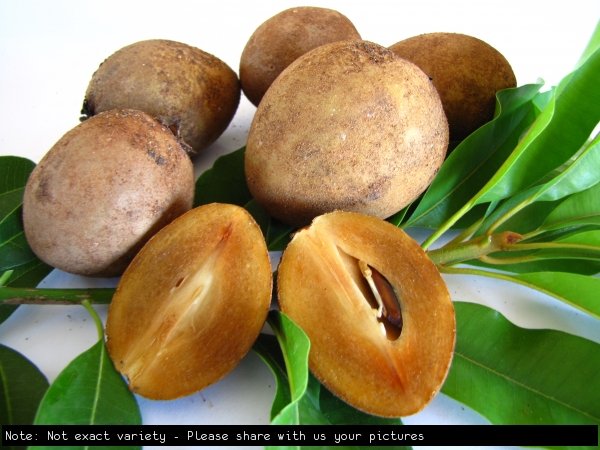Sapodilla - Sawo Manila
Manilkara zapota$99.00 ($99.00-$109.00 choose a size)
Specifications of Sapodilla - Sawo Manila
Preferred Climate Tropical, SubtropicalLearn About Climate Zones
Grown From GraftedLearn About Propagation Methods
Max Height (when in the ground with good conditions) 2-5m
Plants required to Pollinate 1 (Self Pollinating)Learn about Pollination
Can it Handle Frosts? Likes Temps above 5deg
Amount of leaves in Winter? All Leaves (Evergreen)
Suitability in Pots Yes with 35L+ Pot
Water Requirements Moderate Watering
Is it a Dwarf Fruit Tree? Can be pruned to 2m
Time to Fruit/Flower/Harvest 2-3 Years
Sun or Shade Full (Sun:80%-100%)
Preferred Soil Type Good Drainage
Soil pH Moderately Alkaline (7.4-8.0)
Fruiting/Harvest Months February, March
Create a Filter to find similar plants
Customers also bought
These plants are often purchased together. Also check plant information for suitability in your orchard.
Wax Jambu - White
$54.00 ($39.00-$79.00 choose a size)
Pepper - Black
$29.00 ($29.00-$39.00 choose a size)
Soh Shang
$29.00
Customer Tips & Reviews Sapodilla - Sawo Manila
Keperra, QLD, Australia
I like sapodillas. I have two planted in the same spot for better pollination - prolific and Sawo Manila. Quick growin and flowering within a few months of going in the ground. Prolific is a leggy grower, Sawo Manila is much more compact.
Bardon, Qld, Australia
I have never tried the fruit but it sounds a little like abui so I thought I would give it a go. Growing well in both sun and shade.

























